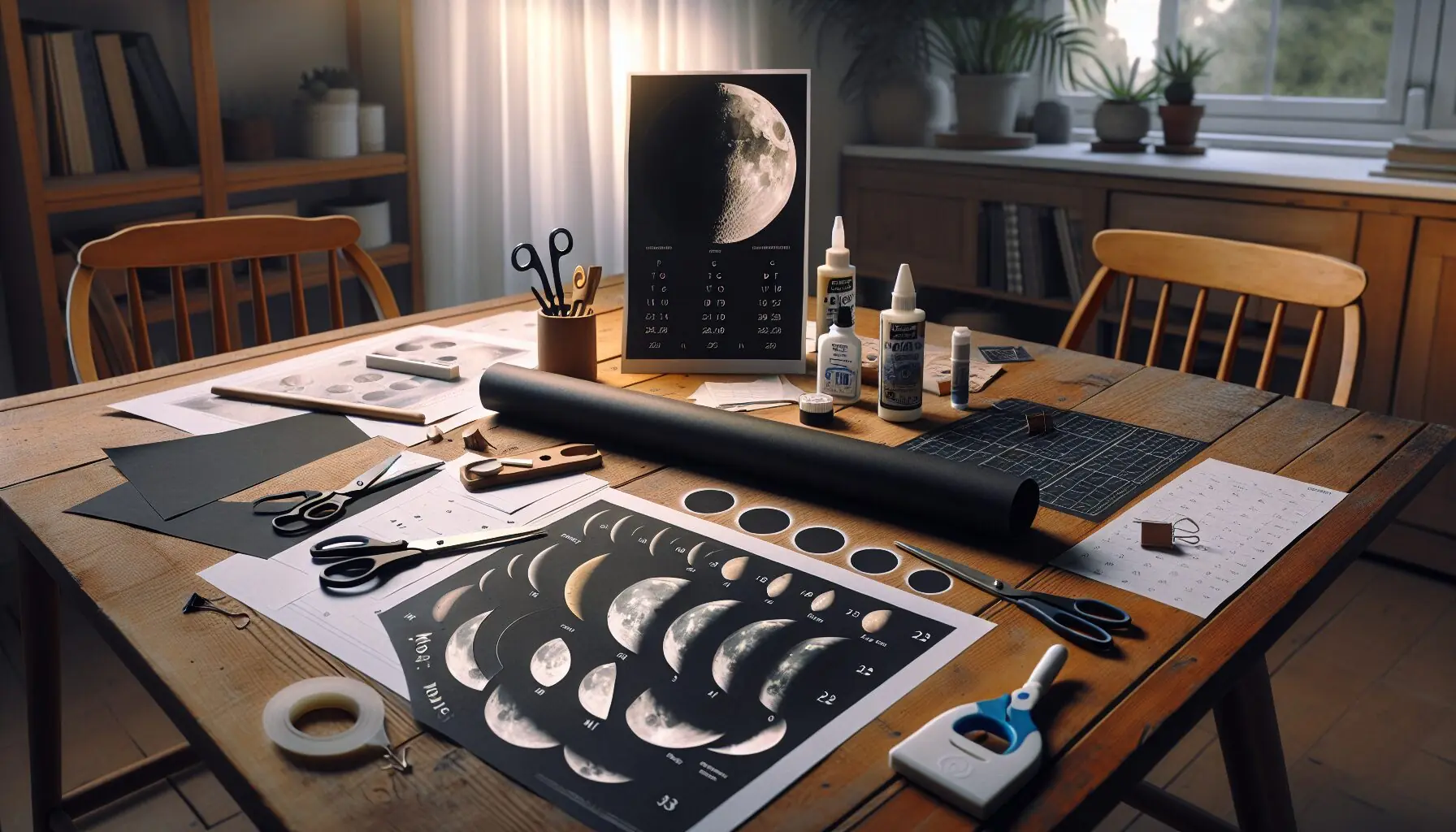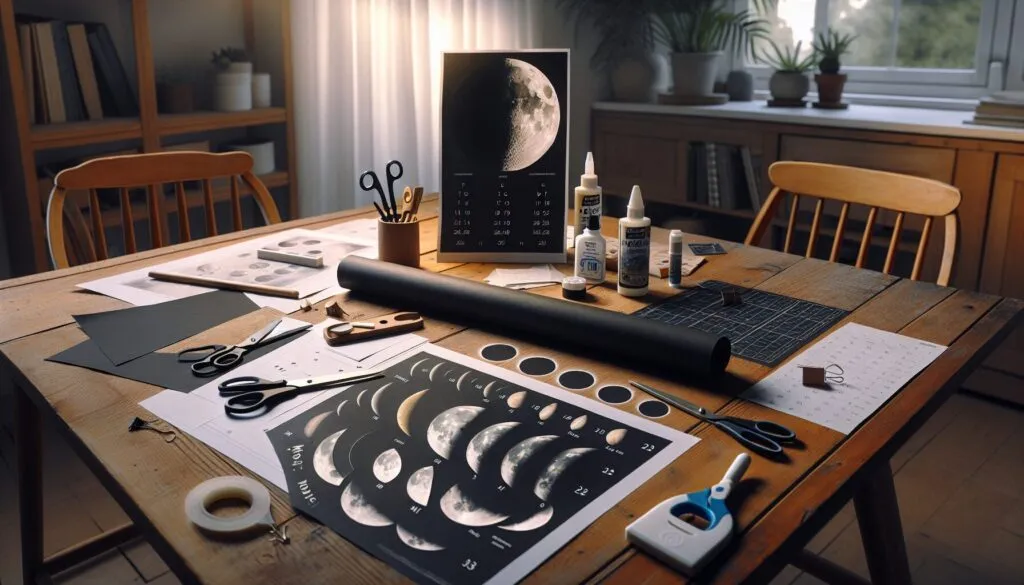Introduction to Mystical Moons
Hello curious parents and little space explorers! 🌙 Today, let’s dive into the magical world of our mystical moon. Ever wondered how our moon changes shape night after night? Well, it’s all about the lunar phases!
These phases make a complete cycle every 29.5 days—a splendid rhythm open for scientific observation. Understanding these phases not only sparks curiosity but also helps your child grasp how ancient civilizations linked these lunar cycles with calendars.
By engaging children in these concepts, we’re setting the stage for their scientific exploration and curiosity about the universe. Let’s embark on this cosmic adventure together!

Create Your Own Moon Phase Calendar
For today’s fun activity, let’s craft a Moon Phase Calendar! It’s a delightful hands-on way to witness the moon’s transformation.
Materials Needed:
- Black construction paper
- White chalk or crayon
- Scissors
- Glue stick
- A printable moon phase template (easy to find online)
Instructions:
- Cut out the moon phases from your printable template.
- Draw a big circle on the black construction paper using white chalk. This circle is your ‘stage’ for lunar tracking.
- Glue each moon phase in a circular pattern, starting with the New Moon.
- When it’s done, hang it somewhere your child can see it daily.
- Spend a few minutes each night identifying the current moon phase.
Tip:
For younger explorers, use stickers or cutouts of animals like owls or wolves that love the moon! Adapt activities to suit your child’s interests.

Why This Activity Enhances Child Development
So, why is this activity so essential, apart from being a whole bunch of cosmic fun? First, identifying moon phases enhances your child’s understanding of earth sciences important for early education. It piques their interest in astronomy and natural sciences, balancing academic knowledge with practical observation skills.
Emotionally, tracking the moon nurtures a child’s sense of time and patience while making tangible the abstract concept of lunar cycles. These shared activities foster a deeper parent-child bond, inviting inquisitive conversations that expand vocabulary and critical thinking.
Plus, you’re setting them up with the observational and analytical chops they’ll need for future scientific explorations!

